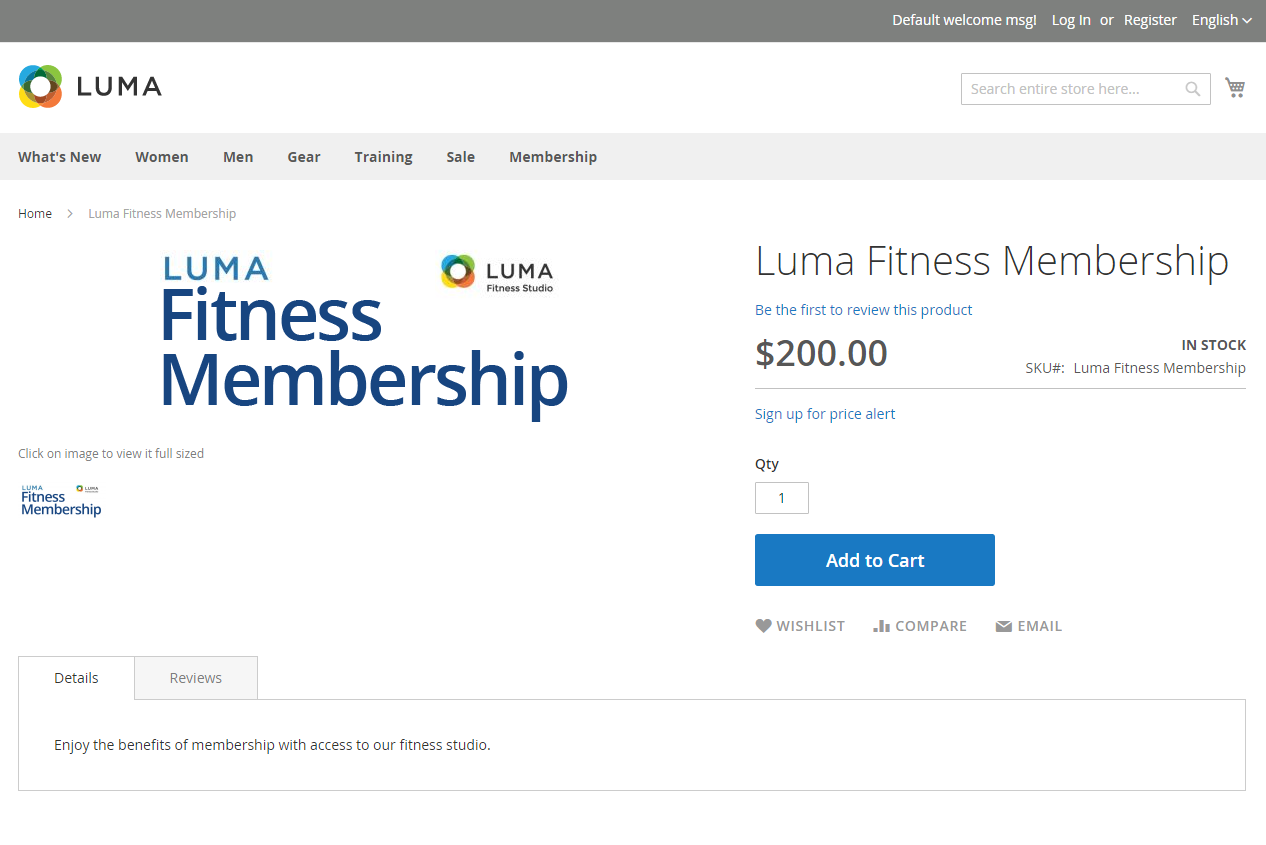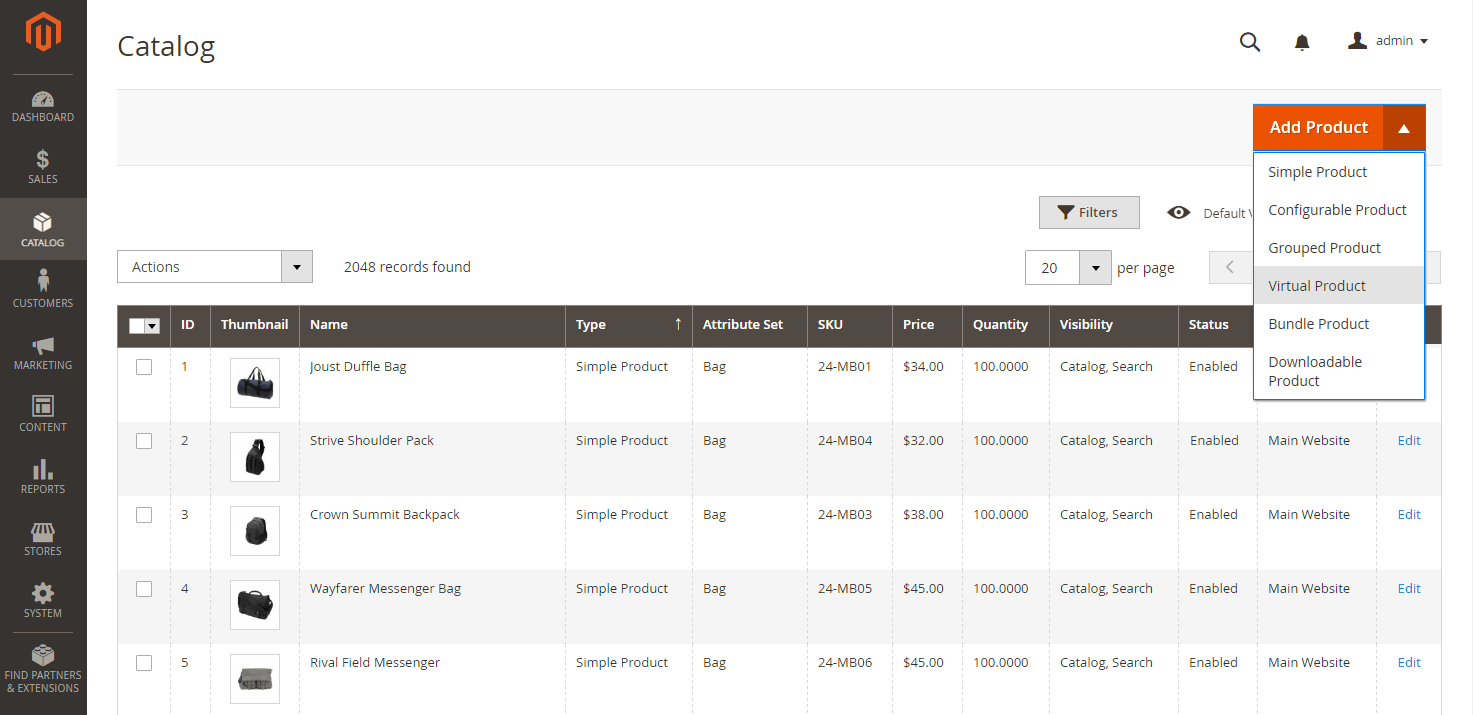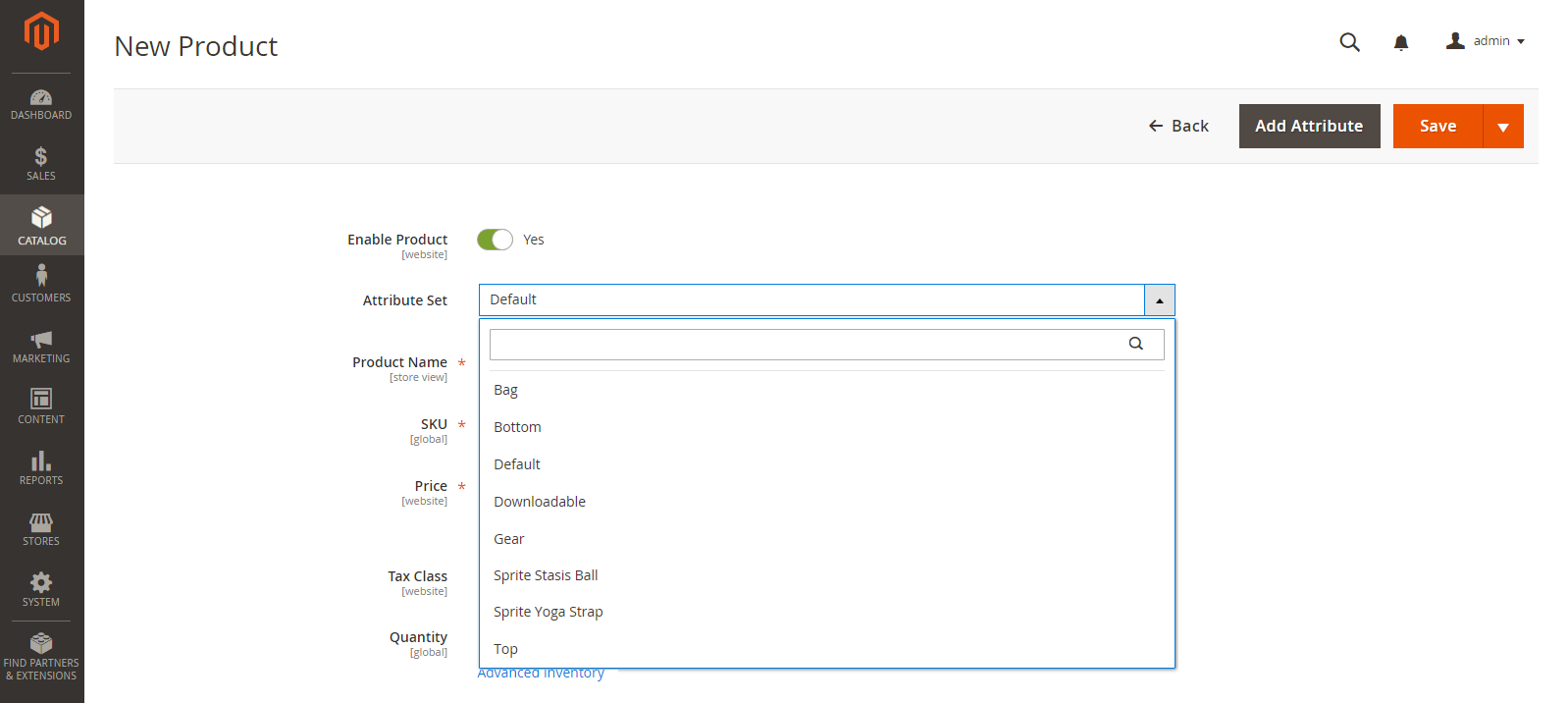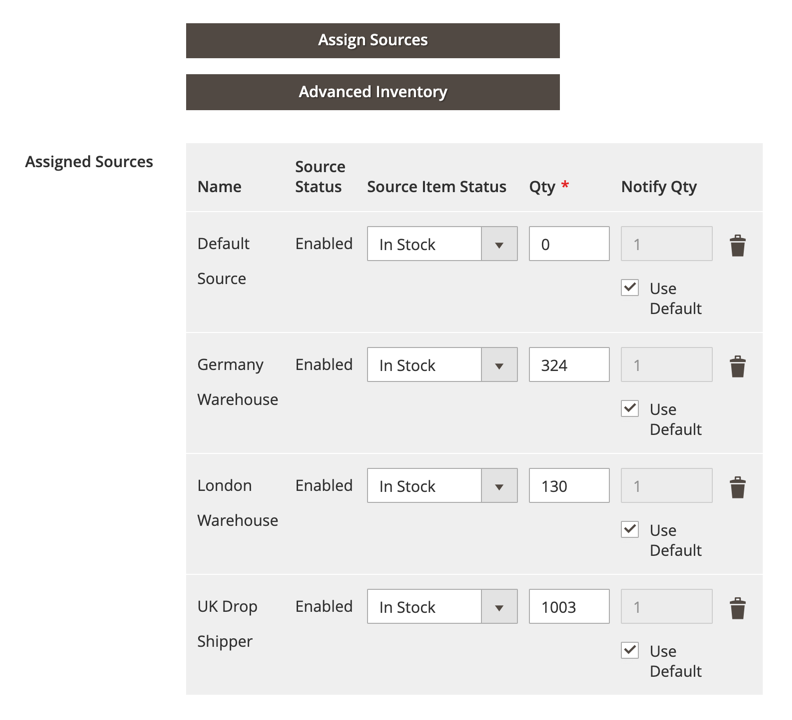Virtual Product
Virtual products, or digital goods, represent non-tangible items such as memberships, services, warranties, or subscriptions and digital downloads of books, music, videos, or other products. Virtual products can be sold individually or included as part of the Grouped Product or Bundle Product product types.
Aside from the absence of the Weight field, the process of creating a virtual product and a simple product is the same. The following instructions demonstrate the process of creating a virtual product using a product template, required fields, and basic settings. When you finish the basics, you can complete the advanced settings and other settings, as needed.
PayPal has deprecated support for the sale of digital goods through PayPal Express Checkout and recommends that you use either PayPal Payments Standard or any other PayPal payment gateway to process any order that includes virtual products.
 Virtual Product
Virtual Product
Step 1: Choose the product type
-
On the Admin sidebar, go to Catalog > Products.
-
On the Add Product (
 ) menu at the upper-right corner, choose Virtual Product.
) menu at the upper-right corner, choose Virtual Product. Add Virtual Product
Add Virtual Product
Step 2: Choose the attribute set
To choose the attribute set that is used as a template for the product, do one of the following:
-
For Search, enter the name of the attribute set.
-
In the list, choose the attribute set that you want to use.
The form is updated to reflect the change.
 Choose Attribute Set
Choose Attribute Set
Step 3: Complete the required settings
-
Enter the Product Name.
-
Accept the default SKU that is based on the product name or enter another.
-
Enter the product Price.
-
Because the product is not yet ready to publish, set Enable Product to
No. -
Click Save and continue.
When the product is saved, the Store View chooser appears in the upper-left corner.
-
Choose the Store View where the product is to be available.
 Choose Store View
Choose Store View
Step 4: Complete the basic settings
-
Set Tax Class to one of the following:
NoneTaxable Goods
-
Enter the Quantity of the product that is currently in stock and do the following:
-
Accept the default Stock Status setting of
In Stock.Because a virtual product is not shipped, the Weight field is not used.
-
Accept the default Visibility setting of
Catalog, Search.
Inventory Management: If you enable Inventory Management, Single Source merchants set the quantity in this section. Multi Source merchants add sources and quantities in the Sources section. See the following Assign Sources and Quantities (Inventory Management) section.
-
-
To assign Categories to the product, click the Select… box and do either of the following:
-
Choose an existing category:
-
Start typing in the box to find a match.
-
Select the checkbox of the category that is to be assigned.
-
-
Create a new category:
-
Click New Category.
-
Enter the Category Name and choose the Parent Category to determine its position in the menu structure.
-
Click Create Category.
There might be additional individual attributes that describe the product. The selection varies by attribute set and you can complete them later.
-
-
Assign Sources and Quantities (Inventory Management)
For Multi Source merchants using Inventory Management, scroll down to the Sources section and assign sources and quantities:
-
To add a source, click Assign Sources. The Assign Sources page displays.
-
Browse or search for a source you want to add. Select the checkbox next to the source(s) you want to add for the product.
 Assign sources to the product
Assign sources to the product -
Click Done to add the sources.
-
To change settings and quantities per assigned source, do the following:
-
Set Source Item Status to In Stock.
-
Enter an amount update the Qty for on-hand stock.
-
To set a notification for inventory quantities, do one of the following:
Custom Notify Quantity Clear the Notify Quantity Use Default checkbox and enter an amount in Notify Quantity. Default Notify Quantity Select the Notify Quantity Use Default checkbox. Magento checks and uses the setting in Advanced Inventory or global Store configuration.  Update Product Quantities per Source
Update Product Quantities per Source -
Step 5: Complete the product information
Complete the information in the following sections as needed:
- Content
- Images and Videos
- Search Engine Optimization
- Related Products, Up-Sells, and Cross-Sells
- Customizable Options
- Products in Websites
- Design
- Gift Options
Step 6: Publish the product
-
If you are ready to publish the product in the catalog, set Enable Product to
Yes. -
Do one of the following:
-
Method 1: Save and Preview
-
At the upper-right corner, click Save.
-
To view the product in your store, choose Customer View on the Admin (
 ) menu.
) menu.
The store opens in a new browser tab.
 Customer View
Customer View -
-
Method 2: Save and Close
On the Save (
 ) menu, choose Save & Close.
) menu, choose Save & Close. Save & Close
Save & Close
-
Things to remember
-
Virtual products are used for non-tangible products such as services, subscriptions, and warranties.
-
Virtual products are much like simple products, but without weight.
-
Shipping options do not appear during checkout unless there is a tangible product in the cart.